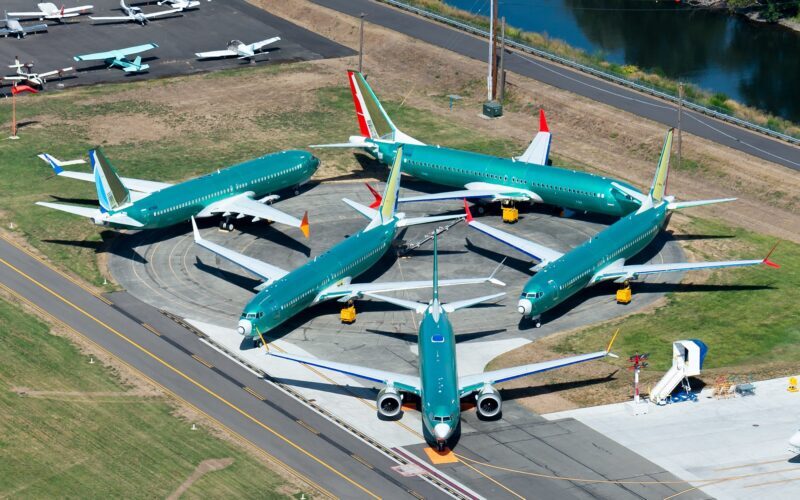Historical Context of Boeing 737 Max Grounding and Notable Aircraft Groundings in Aviation

The grounding of the Boeing 737 Max, while a significant event, is not unique in the annals of aviation history. Similar situations have previously affected other major aircraft, underscoring the persistent challenges faced by the aviation industry in terms of safety and technology. Prominent examples include the Boeing 787 Dreamliner, McDonnell Douglas DC-10, and the de Havilland Comet.
Global Grounding of Boeing 737 Max: Timeline and Impact
The Boeing 737 Max faced an unprecedented global grounding from March 2019 to December 2020, extended further in several regions, following two catastrophic crashes that tragically claimed 346 lives. These incidents, involving Lion Air Flight 610 on October 29, 2018, and Ethiopian Airlines Flight 302 on March 10, 2019, sparked serious concerns about the aircraft’s safety and led to rigorous scrutiny from aviation authorities worldwide.
During the period between March 2017 and March 2019, the global fleet of Boeing 737 Max aircraft, which included 387 airplanes, encountered significant safety challenges. In this timeframe, despite completing 500,000 flights, the fleet experienced two fatal crashes, resulting in a fatal accident rate of four accidents per million flights. This starkly contrasts with the 0.2 fatal accidents per million flights average of the earlier Boeing 737 models.
Initially reluctant to take action, the U.S. Federal Aviation Administration (FAA) decided to ground the 737 Max on March 13, 2019, following emerging evidence of similarities between the two accidents. By this time, 51 other aviation regulators worldwide had already banned the aircraft from their airspace due to safety concerns.
By March 18, 2019, all 387 Boeing 737 Max aircraft in service were grounded globally, marking a pivotal moment in aviation history. This decision reflected not only the growing concerns over the aircraft’s safety but also the united efforts of international aviation authorities to prioritize passenger safety.
Lion Air Flight 610
On October 29, 2018, Lion Air Flight 610, operated by a 737-8, tragically crashed into the Java Sea just 13 minutes after departing from Soekarno–Hatta International Airport in Jakarta, Indonesia. The flight was en route to Depati Amir Airport in Pangkal Pinang, Indonesia, when all 189 passengers and crew aboard perished, marking the first fatal crash and hull loss of a 737 Max. Delivered to Lion Air just two months prior, this aircraft experienced similar malfunctions during a flight the previous day, which were resolved by an additional pilot on board. The final report by Indonesia’s National Transportation Safety Committee, released in October 2019, attributed the crash to the MCAS system being triggered by a faulty angle-of-attack sensor.
Ethiopian Airlines Flight 302
The second catastrophic event involved Ethiopian Airlines Flight 302, another 737-8 Max, which crashed approximately six minutes after takeoff from Addis Ababa, Ethiopia, on March 10, 2019. The flight was bound for Nairobi, Kenya, and all 157 individuals on board were killed. Preliminary investigations pointed to similarities between this crash and Lion Air Flight 610, particularly concerning the aircraft’s dive configuration.
These two accidents led to the worldwide grounding of the 737 Max fleet starting on the day of the Ethiopian Airlines crash.
Alaska Airlines Flight 1282
Most recently, on January 5, 2024, Alaska Airlines Flight 1282, a 737-9 Max, experienced a rapid decompression shortly after takeoff from Portland International Airport. The incident was due to the mid-cabin exit door plug on the 737-9 blowing out during ascent. The aircraft returned safely to Portland, and thankfully, there were no fatalities or significant injuries among the 171 passengers and 6 crew members. Some passengers reported minor incidents, including personal items and cabin trim being ejected through the opening.
Following this incident, Alaska Airlines voluntarily grounded their 737-9 fleet. The FAA also grounded 171 similar aircraft globally, pending inspections before they can return to service.
The grounding of the Boeing 737 Max represented a pivotal moment for the aviation industry, with far-reaching effects on airline operations, passenger travel, and Boeing’s reputation. This critical situation necessitated a thorough review of the aircraft’s design and operational protocols, leading to extensive modifications. These changes were essential in addressing the root causes of the tragic accidents and in preventing similar incidents in the future.
While the grounding of the 737 Max is significant, it is not unprecedented in aviation history. Similar incidents have occurred with other major aircraft, underscoring the persistent challenges faced by the industry in terms of safety and technology. These historical parallels highlight the importance of continuous improvement and vigilance in aircraft design and safety protocols.
Boeing 787 Dreamliner (2013):
In its second year of operation, the Boeing 787 Dreamliner encountered several issues with its electrical systems, primarily related to lithium-ion batteries. Incidents, including fires, prompted the U.S. Federal Aviation Administration (FAA) to conduct a comprehensive review, leading to the grounding of all 50 aircraft in service at the time. This action was the first complete grounding of an aircraft model since the DC-10 in 1979.

McDonnell Douglas DC-10 (1979):
The DC-10’s early operational history was plagued by safety concerns, partly due to a design flaw in its cargo doors. The crash of American Airlines Flight 191 in 1979, the deadliest aviation accident in U.S. history, prompted the FAA to temporarily ban all DC-10s from U.S. airspace. This incident profoundly affected the aircraft’s public perception, influencing its orders and ultimately contributing to the cessation of its production.
de Havilland Comet (1954):
As the world’s first commercial jetliner, the de Havilland Comet faced a significant setback in 1954. Two mysterious accidents involving midair disintegrations led to the grounding of the entire fleet. This event marked a crucial phase in the early history of jet airliners, emphasizing the need for rigorous safety standards in aircraft design and operation.
These historical groundings, though varying in circumstances, collectively highlight the paramount importance of safety in aviation. They illustrate how such incidents can lead to transformative changes in regulatory practices, shift public perception, and pose financial challenges for aircraft manufacturers.
Sources: AirGuide Business airguide.info, bing.com
